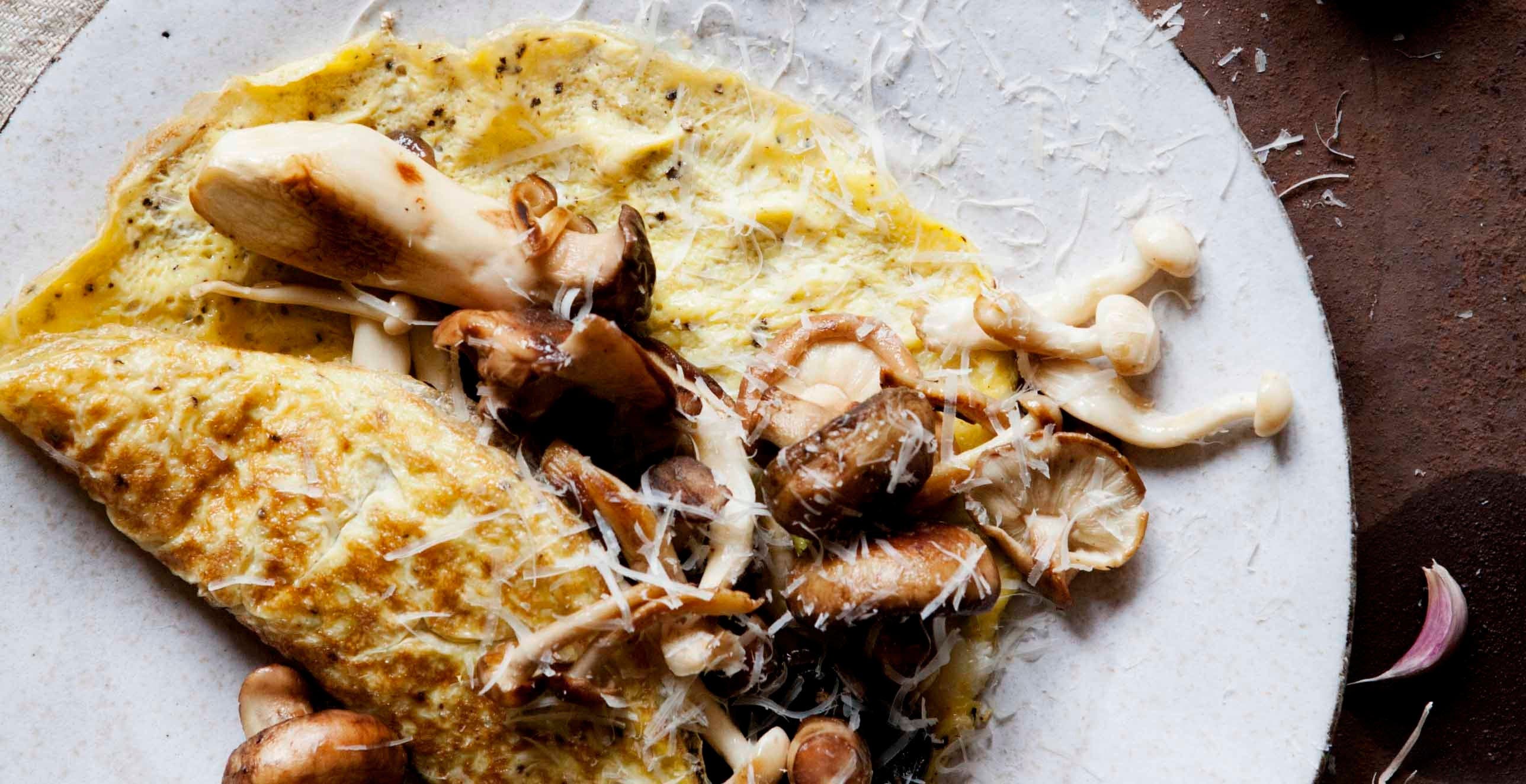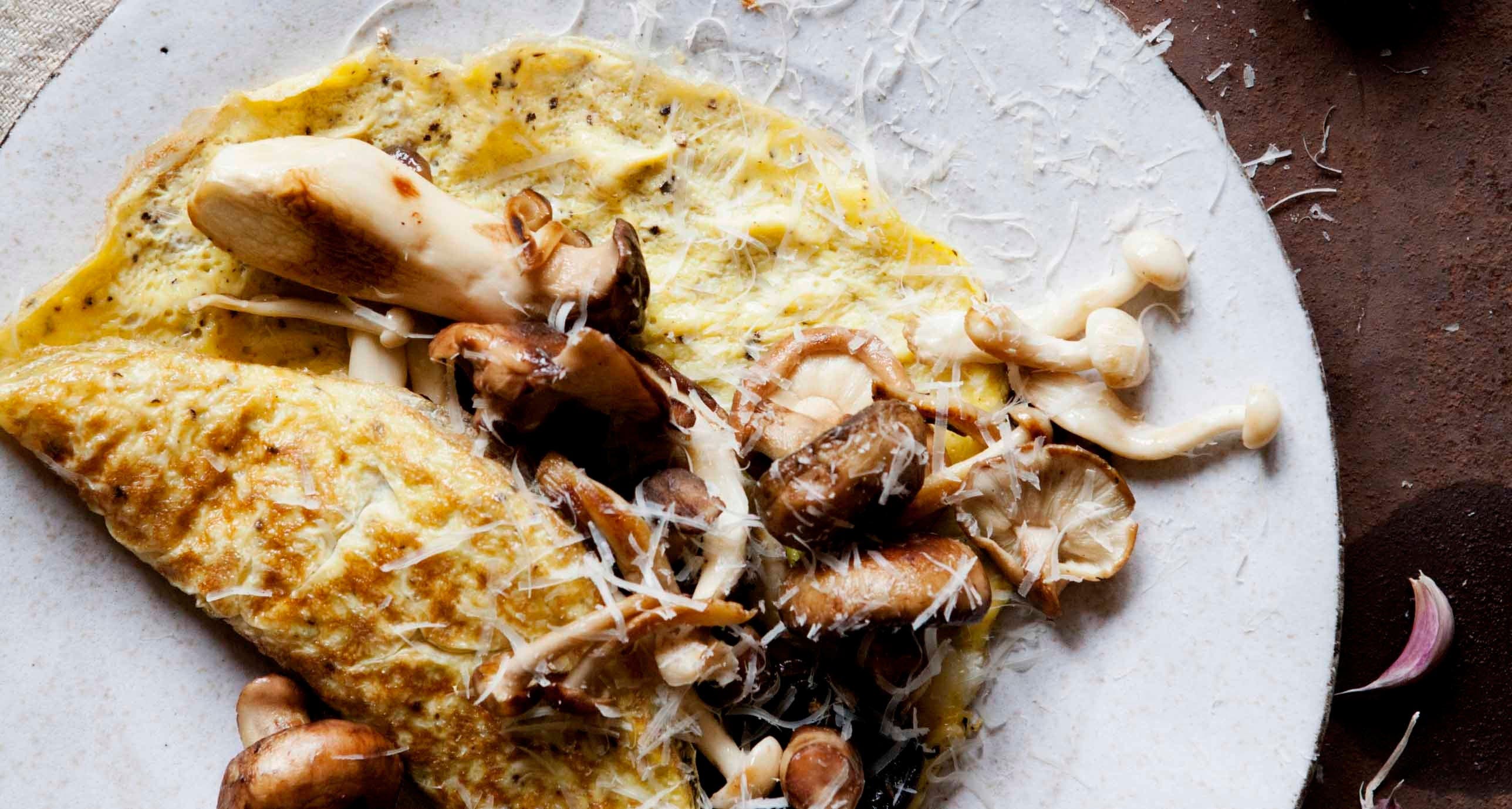How to cook the perfect omelette


Whether you enjoy your omelettes extra-creamy on the inside or generously browned on the outside, when they’re expertly made, they never fail to make eggs feel like a special treat. Despite the apparently unattainable and enigmatic skills required to make an omelette the good news is that absolutely anyone can make one if they’re willing to put in some practice time (and considering the fact that eggs are a ZeroPointTM food you can keep practicing to your heart’s content.)
Everything you need for a basic French omelette
French omelettes are known for their creamy, custard-like interiors and unblemished, perfectly smooth exteriors. They’re also known for being difficult to master and for their fast cooking time (less than 60 seconds when made properly.) Making French omelettes may seem awkward at first and you’ll undoubtedly be faced with the task of eating many imperfect ones before you find your omelette-making rhythm. However, as with all good things, practice makes perfect and once you’ve got the motions memorized you’ll be making French omelettes any time of day, in five minutes or less.
Eggs: Most recipes will call for three large eggs per omelette and if you decide to use fewer or more eggs the skillet size will have to be adjusted accordingly. For best results use real eggs instead of liquid egg substitute.
Salt and pepper: Use kosher or sea salt and freshly ground white or black pepper. Although there is disagreement amongst home cooks about when the seasonings should be added (some people believe adding the salt before cooking toughens the finished eggs) acclaimed chef and master of the French omelette-making technique, Jacques Pépin, adds the salt and pepper early on during the whisking process.
Fresh herbs or grated cheese: French omelettes aren’t stuffed with add-ins (that would be a Western-style omelette) but fresh herbs or finely grated cheese can be whisked directly into the eggs before pouring into the skillet. Finely chopped chives, basil, parsley, and thyme all add a pleasing subtle flavour while firm cheeses such as aged cheddar, parmesan or Manchego will melt without becoming overly stringy.
Unsalted butter: Some recipes call for up to three tablespoons of butter per omelette but as long as you have a good non-stick pan you can use a much smaller amount, while still imparting a delicious buttery flavour.
8” Non-stick skillet: If possible, buy a special 8” non-stick skillet and only use it for making omelettes, the surface of the skillet needs to be completely non-stick without any scratches (which should be avoided in general.) Avoid using cast iron skillets, even a perfectly seasoned surface is porous enough that the cooking eggs could stick.
Plastic fork (can be reused for future omelettes), wooden chopsticks or a small silicone whisk: Any of these tools can be used to whisk the eggs both in the bowl in the skillet without scratching the non-stick surface.
1 medium-sized mixing bowl
How to make a French omelette
1. Whisk together three eggs in a medium-sized mixing bowl using a plastic fork, wooden chopsticks or small silicone whisk until the yolk and whites are combined. Add a pinch of salt, freshly ground pepper and herbs or grated cheese if using.
2. Melt 1 teaspoon of unsalted butter in an 8” non-stick skillet over medium heat. Pour in the whisked egg mixture.
3. Using your whisking tool begin to lightly scramble the eggs as they cook, focusing more on the top uncooked layer of eggs than the bottom layer and moving from the edges to the centre of the omelette.
4. Continue for another 45 to 60 seconds or until the surface of the omelette looks cooked but still slightly runny and loose.
5. Carefully remove the skillet from the heat and use your whisking/scrambling implement to gently roll the omelette away from you and onto itself. Use a fork to gently slide the finished omelette onto a plate. Ideally, the omelette will be smooth, free of brown spots and creamy in the centre.
Making Western-style omelettes
Western-style omelettes are also commonly known as diner- or Denver-style omelettes. Unlike their French counterparts, Western-style omelettes are cooked for a longer period of time and are usually stuffed with veggies, cheeses, and/or meats. Use 4 eggs mixed with 1 tablespoon of water per omelette (Western-omelettes are more conducive to sharing), the water helps to steam the eggs and give them volume. The cooked add-ins can be mixed directly into the whisked eggs or they can be folded into the partially cooked omelette. Western-style omelettes can be gently agitated in the pan with a spatula but a slightly browned crust and spongier texture is desired.
